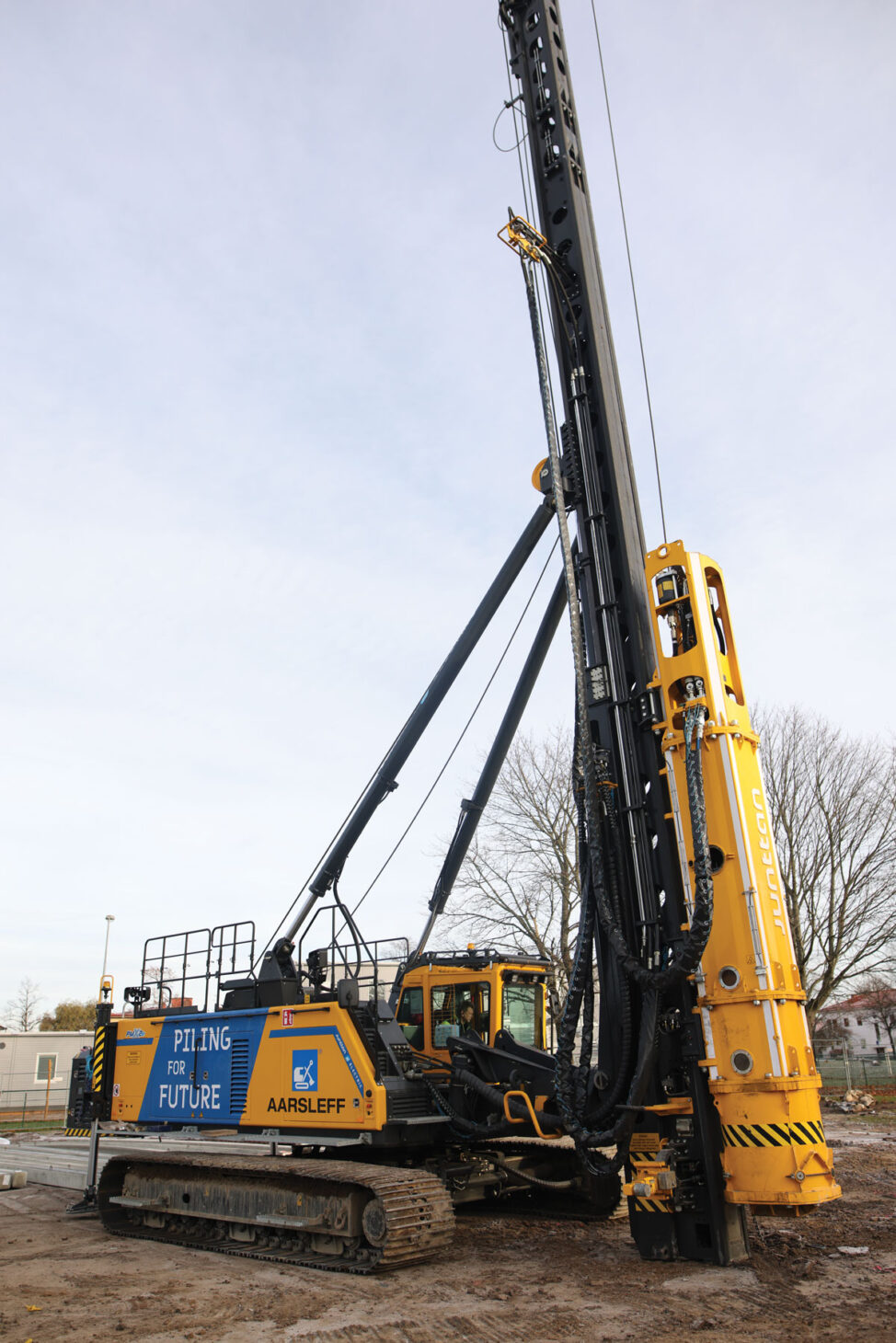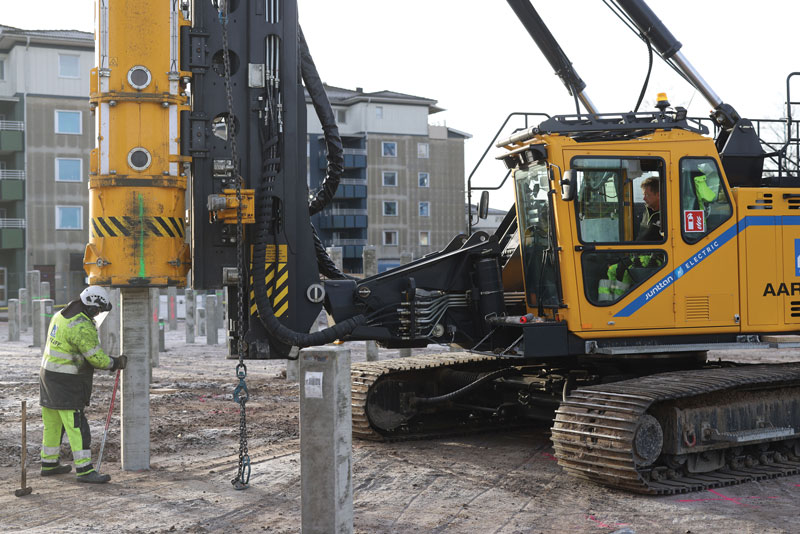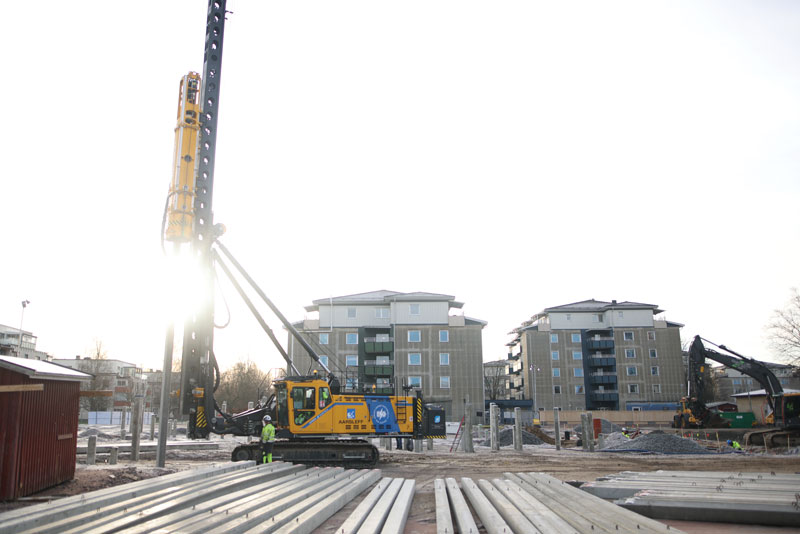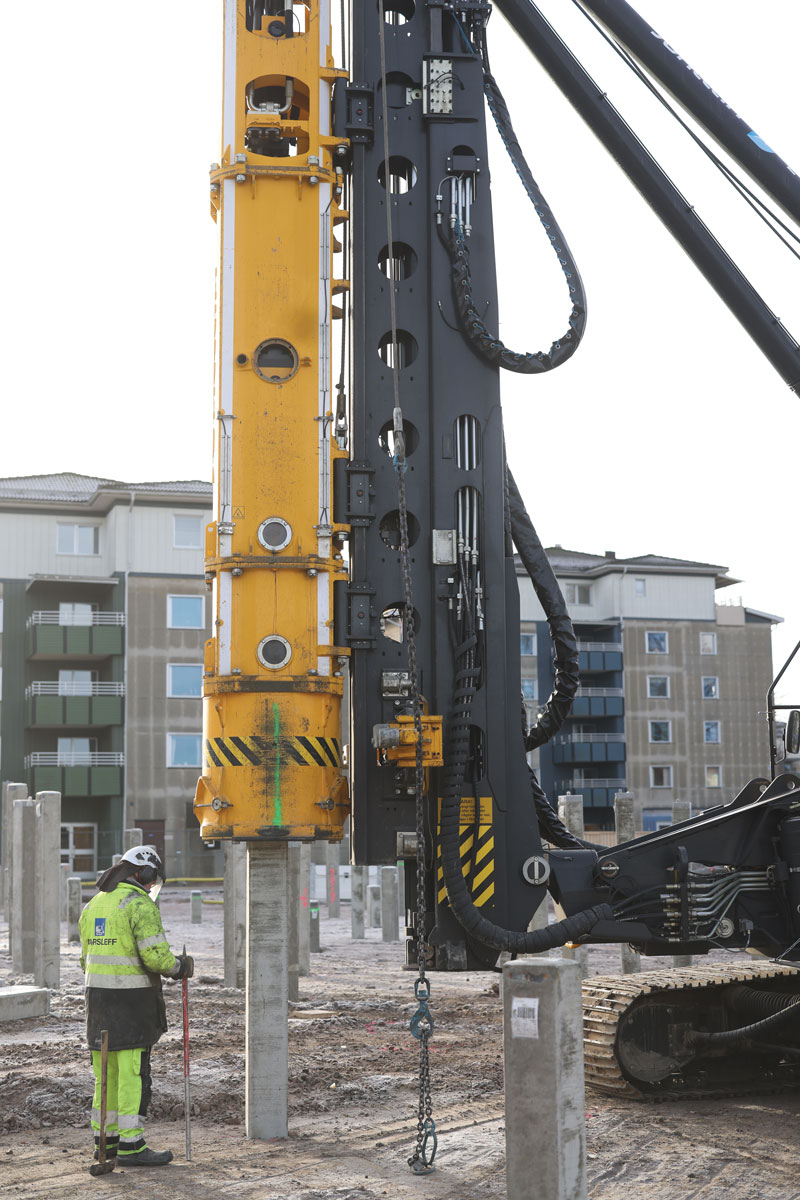
Junttan made global news last year when it unveiled the first electric pile driving rig – the PMx2e – which combines the best of both worlds. That is, hydraulics merged with modern batteries and electric motor technology.
Designed for more sustainable innovations, the eJunttan product line has zero CO2 emissions and consumes less energy, making it ideal for sustainable projects. Other features include less consumed energy per pile, less noise pollution, more power and instant torque, and the same robust structure and usability as the Junttan PMx22.
First projects
The PMx2e rig completed its first job in Mölndal, Sweden, in mid-2021, and exceeded customer expectations, says Morgan Sjogren, fleet manager at Aarsleff Ground Engineering, a Sweden-based company that provides sustainable solutions to technically challenging foundation projects in the rail, commercial, civil, infrastructure, energy, maritime and residential markets.

The project involved installing 176 joined piles down to approximately 50 metres for the construction of the new life science cluster next to the E6 highway in Mölndal.
“The rig has been working well, with less noise and the battery pack has met all the expectations,” said Sjogren. “Our estimate of up to 6.5 hours of working time with one battery unit has been well-realized at this project as the customer worked with a medium working load from 7 a.m. until 3 p.m. on average.”
Following this project, the Aarsleff team moved on to the next project to use the Junttan PMx2e to drive piles for a new preschool and a wooden constructed apartment building in the Hagaborg area of Karlstad, located in central Sweden.
“We started this project in early November 2021, on behalf of NCC [Building Sweden], and it was completed a few days before Christmas,” said Anders Magnusson, project manager at Aarsleff
Ground Engineering.

NCC Building Sweden builds and renovates sustainable housing, offices, health care buildings, schools, sports facilities and public buildings in Sweden. With advanced skills in sustainability, digitalization and partnering, NCC develops projects jointly with customers from the early stages.
“The project was a fairly easy one and the conditions for concrete piling were very good,” said Magnusson. “However, it was the first major project we were going to do with our newly purchased battery-powered pile driving rig and we didn’t know how much the machine could take. The total amount for the foundation work landed at $5 million Swedish kronas (approximately $640,000).”

He says the PMx2e has the capacity of a PMx22, but the diesel engine is replaced by a battery powered engine. The PMx22 is a small to medium rig that can drive piles up to 22 metres and uses a Junttan hydraulic hammer with a ram weight up to 6,000 kilograms.
“We used a Junttan Shark hammer with five tons of weight, which muffles the noise. It is the quietest hammer on the market. We were in the middle of the city and the choice of hammer was working, which made the noise level much lower.”
Material and techniques
The team used concrete piles with dimensions 235 and 270, which can withstand 800 kilonewtons (kN) and 1,200 kN, respectively.
“For these concrete piles, we also used spiked rock shoes to attach to rock,” said Magnusson. “The average length of the piles was about 25 metres. Our sister company, Centrum Pile AB, manufactures concrete piles and they are the ones we use. For this project, 350 piles were used, which equals a total of approximately 8,750 metres. It was the most cost-effective for those loads given the nature of the land.
As for challenges that were brought on by design, environment, geology/soil, noise or vibration abatement, Magnusson says vibration meters were set up to keep an eye on whether the vibrations would exceed the limits. A safe working platform was also established through geotextile and a bed of crushed gravel.